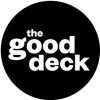What is it?
An interview guide is a document or set of guidelines designed to standardize the interview process. It ensures that interviews are consistent, focused, and reveal valuable insights that will help with developing and designing more personalized content.
Without one, interviews may become disorganized, with topics jumping around, and unrelated questions being asked. This can result in missed opportunities to explore important areas and gather valuable insights.
In the context of presentation development, interviews play a versatile role in content development. They can help gather content from subject matter experts, understand stakeholder needs, ensure content accuracy, customize materials according to client preferences, refine content based on audience feedback, and conduct market research to shape the presentation's content and direction.
When to use it
|
Remember to
|
Interview guide outline:
1 |
Interviewer introduction and project introduction: 10 minutes Introduce yourself and tell (or remind) the participant(s) the purpose of the interview. Give them an overview of the format, and ask them if they have any questions. Remember to: maintain a comfortable atmosphere with eye contact, positive body language, and reassurance when needed. |
2 |
Interviewee introduction: 10 minutes Take a few minutes to allow the interviewee(s) to introduce themselves. Before the interview, make sure to conduct thorough research on the interviewee(s) to familiarize yourself with their background and relevant information. This will help you establish a connection and ask more targeted questions. Be prepared with prompts or follow-up questions to facilitate the introduction process if needed. |
3 |
Context questions: 20 minutes During this portion of the interview, we delve into the background of the topic by asking a series of questions that help us gather the relevant information. The objective is to establish the necessary context for the interview. For instance, we might inquire about the interviewee's previous experience with similar projects, their role within the organization, or any specific challenges they have encountered in the past. By exploring these aspects, we can better understand the interviewee's perspective and ensure that the subsequent discussion is grounded in a solid foundation of knowledge and context. |
4 |
Focused questions: 40 minutes Allocate a substantial amount of time to ask targeted questions that unlock detailed insights and opinions. Encourage the interviewee(s) to openly share their thoughts, experiences, and any pertinent examples they may have encountered along their journey. |
5 |
Follow-up: 10–20 minutes Follow up on any points that require clarification or further elaboration. Ask additional questions to gain a deeper understanding of a response or even circle back to a question where you may not have fully connected the dots on their answer. It's essential to ensure that you leave the interview with a clear understanding of the interviewee's perspective. It's crucial to avoid leaving the interview without a clear understanding of the interviewee's perspective. |
6 |
Closing and wrap-up: 10 minutes As the interview comes to a close, take a few minutes to summarize the main points discussed. Express sincere gratitude for the interviewee's time and valuable input. Finally, offer the interviewee(s) a chance to share any additional comments or suggestions they may have. |

